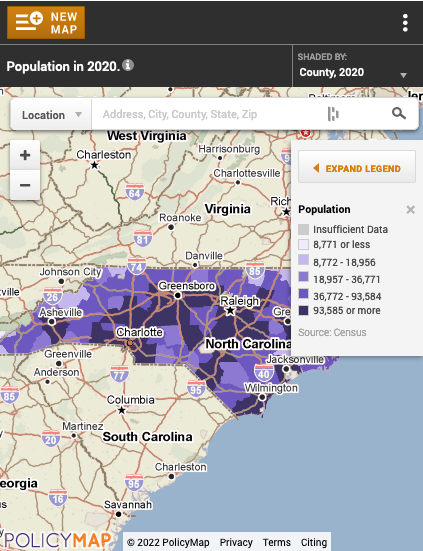Detailed Cancer Rates by State and County from the CDC

[This blog post was revised in March 2022 to reflect more recent data.]
Cancer is one of the most common diseases in the United States: approximately 40 percent of all people will be diagnosed with some type of cancer during their lifetime. Many health agencies monitor cancer trends; among them is the National Cancer Institute’s Surveillance, Epidemiology, and End Results (SEER) program. SEER measures cancer incidence – the number of new cases diagnosed – as well as survival statistics and mortality. The newest data on PolicyMap is state and county cancer rates and cases, provided by SEER and CDC’s National Program of Cancer Registries (NPCR). The rates are based on 2014 – 2018 reporting years. Data are not available in several states that do not participate in the SEER registry.
Health practitioners monitor local cancer rates to plan appropriate interventions for the affected population, including screening. Cancer incidence varies geographically and by population, due to risk factors and behaviors that make some groups more susceptible than others. According to the National Cancer Institute’s SEER Cancer Trends progress report, blacks have the highest rate of new cancers among major racial/ethnic groups, followed by whites. Rates are lower among American Indians/Alaska Natives, Hispanics, and Asians and Pacific Islanders. The maps below show the differences for counties in Louisiana between cancer rates for Black and White residents (both maps are shaded with the same ranges):
Visit PolicyMap to explore cancer rates among race/ethnicity and age categories for the five most common types of cancer: breast, cervical, colon & rectal, lung & bronchus, and prostate. These indicators can be found in the Health menu under Health Conditions.